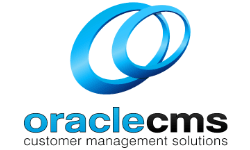Call Centre Mystery Shopping
Call Centre Mystery Shopping involves hiring individuals to pose as customers and interact with call centre agents, with the goal of evaluating the service based on specific criteria.
What’s the Benefit of Call Centre Mystery Shopping?
Much like Mystery Shopping conducted in retail stores, call centre mystery shopping is to check that the actual customer experience is aligned with the planned customer experience.
Whilst coaching and your own internal quality programs should be used to manage quality, mystery shopping simply adds an unbiased, independent dimension to the quality equation providing genuine Voice of the Customer (VoC) insights.
What does Call Centre Mystery Shopping measure?
Ultimately, the goal of call centre mystery shopping is to gain insights into the experience a typical customer encounters when trying to reach a business via the call centre channel.
Using our own Contact Centre CX Benchmarking service as an example, there are two key components:
- ACCESS – How easy was it to get through?
- QUALITY – How was the experience when speaking the live agent?
Different providers will provide different insights and capture a wide range of metrics.
Elements that can be assessed can include:
- Access – wait times, how many layers of menu options, talk time, hold time, etc.
- Quality – greetings, use of name, handling objections, clarity of information, active listening, use of hold, if there were any audio issues etc.
The ACXPA Contact Centre CX Benchmarking service assesses over 80 metrics – learn more about how we assess quality using the Australian Call Centre Quality Standards >
What’s the difference between Call Centre Mystery Shopping and Call Centre Quality Monitoring?
In call centres, mystery shopping and quality monitoring are two distinct approaches used to assess and improve customer service, each with its own methodology and focus:
Mystery Shopping
Mystery shopping involves hiring individuals to pose as customers and interact with call centre agents to evaluate the service based on specific criteria.
These mystery shoppers make calls pretending to be genuine customers with typical queries or issues.
They assess various aspects such as agent courtesy, problem-solving skills, adherence to scripts, and overall customer experience.
The key benefits of mystery shopping include:
- Human Perspective: Provides qualitative feedback and insights into the customer experience from a human perspective.
- Scenario-Based Evaluation: Allows assessment of how agents handle specific scenarios, including unusual or challenging situations.
- Detailed Feedback: Offers nuanced observations on elements like tone, empathy, and personal connection, which are difficult for automated systems to capture.
Quality Monitoring
Quality monitoring, on the other hand, is a continuous process where call centre interactions are regularly recorded and reviewed to ensure compliance with company standards and regulatory requirements.
This process typically involves:
- Regular Reviews: Ongoing evaluation of a random sample of calls to maintain consistent service quality.
- Performance Metrics: Analysis of key performance indicators (KPIs) such as call handling time, resolution rates, and adherence to scripts.
- Feedback and Training: Identifying areas for improvement and providing targeted feedback and training to agents based on their performance.
Key Differences between Mystery Shopping and Call Monitoring
- Purpose and Scope: Mystery shopping focuses on the overall customer experience from a customer’s viewpoint, often using specific scenarios to test agents’ skills. Quality monitoring, however, is about maintaining consistent service standards and improving overall operational efficiency.
- Methodology: Mystery shopping uses external evaluators posing as customers, while quality monitoring involves internal or third-party teams reviewing recorded interactions.
- Frequency and Consistency: Mystery shopping is typically periodic and scenario-based, whereas quality monitoring is a continuous process ensuring ongoing adherence to service standards.
- Type of Feedback: Mystery shopping provides qualitative, scenario-specific feedback, while quality monitoring offers quantitative analysis based on predefined performance metrics.
Can AI be used to assist with Call Centre Mystery Shopping?
In a word, NO!
One of the key benefits of genuine Mystery Shopping calls is the human touch; mystery shoppers can provide nuanced, qualitative feedback that AI may miss.
These human evaluators can assess subtleties such as tone, empathy, and personal connection, which are crucial elements of customer service.
Additionally, mystery shoppers can offer insights based on their real-world experiences, providing context and understanding that goes beyond mere data points.
Can AI be used to assist with Call Monitoring?
YES!
One of the most transformative developments in mystery shopping for call centres is the integration of artificial intelligence (AI) to record and analyse all customer interactions.
Modern AI technologies enable call centres to automatically capture and transcribe every call, providing a wealth of data for analysis.
This process begins with advanced speech recognition software, which converts spoken words into text with remarkable accuracy.
This transcription is then fed into AI algorithms designed to detect patterns, sentiments, and key performance indicators (KPIs) such as call duration, customer sentiment, and resolution times.
AI-driven analysis goes beyond simple keyword spotting; it can understand the context and nuance of conversations.
For example, sentiment analysis tools can gauge the customer’s emotional state throughout the call, identifying moments of frustration or satisfaction.
Machine learning models can also track adherence to scripts, compliance with regulatory requirements, and the effectiveness of agents’ problem-solving strategies.
By leveraging these insights, call centres can pinpoint areas for improvement, tailor training programs, and ultimately enhance the overall customer experience.
Search for suppliers of Call Centre Technology in the free ACXPA Supplier Directory >
Reporting Considerations
Most call centre mystery shopping providers will typically provide a range of comprehensive reports on hard metrics (e.g. how long they were on hold for) through to a rating on the performance of the agent and everything in between.
They can also provide actual call recordings as well.
Reporting can be as simple as Excel spreadsheets through to sophisticated Business Intelligence reports and Dashboards—ultimately, it’s about finding the reporting that works best for you and balances ease of use and cost (more sophisticated platforms invariably cost more).
Like all things, just make sure you are clear with your expectations upfront.
One of the benefits of Call Centre Mystery Shopping can be tracking performance trends over time – most suppliers will provide either monthly, quarterly, bi-annual or annual reporting.
Designing the right Call Centre Mystery Shopping program for your business
There are several professional organisations that specialise in conducting call centre mystery shopping programs (including our Contact Centre CX Benchmarking service; you can find other suppliers in the free ACXPA Supplier Directory). These organisations will help design a program that works for you.
In designing the right Call Centre Mystery Shopping program for your business, some points you should consider include:
- How many calls do you want to be assessed?
- How many scenarios do you need to design scripts for?
- What if, as part of the testing, a case needs to be logged? Can that be removed later?
- Are there different times of the day or different routes you need the Mystery shopper to test?
- What criteria do you want to be assessed? The call centre agents’ skills, how long it took to be connected, the accuracy of the information provided, whether a follow-up was made, etc.
- Are there compliance checks that need to be assessed? Completing ID verification, asking permission to place the customer on hold, providing a reference number, clearly providing their name, etc, are all examples of compliance checks.
- What standards are you being assessed against? Quality can mean different things to different businesses—ultimately, it’s important to ensure you know what good looks and sounds like for your business.
A Final Word
As the information above shows, setting up a Mystery Shopping program specifically for a call centre requires extensive consideration.
Using suppliers with extensive experience in contact centres (including managing and optimising contact centres) should be an essential qualifier for ensuring maximum benefit from your investment.
It’s also important to ensure there is a means to an end—there is no point in conducting Call Centre Mystery Shopping if it’s not being used to help you identify areas for improvement!
Finally, don’t just use Mystery Shopping as the only check for the quality of service you provide.
Mystery Shopping should form a component of your overall quality program, combined with other tools such as Call Monitoring, Coaching, Customer Feedback and so on.
ACXPA provides a range of resources, support and training courses for frontline teams and leaders all designed to help improve your performance.


















